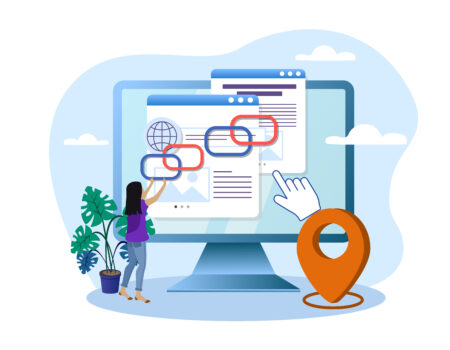SEO Glossary: 100+ Key SEO Terms Every Marketer Should Understand
Navigating the world of SEO can be challenging, especially if you’re not familiar with the terminology used by
professionals. Whether you’re optimizing your website, running
a business, or partnering with a provider, understanding these terms is crucial.
To help you, we’ve compiled a comprehensive list of essential SEO terms and their meanings. Whether you’re a beginner or
an experienced marketer, this glossary will serve as a valuable reference.
# | A | B | C | D | E | F | G | H | I | J | K | L | M | N | O | P | Q | R | S | T | U | V | W | X | Y | Z
40 Essential SEO Terms You Should Know
- 2xx Status Codes – A set of responses from a server indicating that a request was successfully
processed. - 301 Redirect – A permanent redirection from one URL to another, commonly used for SEO and site
maintenance. - 302 Redirect – A temporary redirect that moves traffic from one URL to another without
impacting search rankings. - 4xx Status Codes – A category of errors indicating that a page is unavailable or does not exist
on the server. - 5xx Status Codes – Server-related errors that indicate the site is experiencing technical
issues.
A
- Accelerated Mobile Pages (AMP) – A framework developed by Google to improve mobile site
performance and speed. - ALT Text (Alternative Text) – Descriptive text assigned to images, allowing search engines to
understand their content. - Anchor Text – The clickable text in a hyperlink, which helps search engines understand the
context of the linked page. - Authority – A measurement of a website’s credibility and trustworthiness based on various
ranking factors.
B
- Backlink – A link from an external website pointing to your site, contributing to its authority
and ranking. - Black Hat SEO – Unethical SEO practices that violate search engine guidelines and can lead to
penalties. - Blog – A website section featuring regularly updated articles, often used for content marketing and SEO.
- Bookmark – A saved link in a browser for quick access to a particular webpage.
- Bot – Automated software that performs specific online tasks, such as crawling websites for
indexing. - Bounce Rate – The percentage of visitors who leave a site after viewing only one page.
- Branded Keyword – A search term that includes a specific brand name, such as “Nike running
shoes.” - Breadcrumb Navigation – A visual trail that shows users their location on a website, improving
navigation and UX. - Broken Link – A hyperlink that no longer works, often leading to a 404 error page.
- Browser – Software used to access the internet, such as Chrome, Safari, or Firefox.
C
- Cache – A temporary storage mechanism that helps speed up web page loading times.
- Canonical URL – The preferred version of a web page, preventing duplicate content issues.
- ccTLD (Country-Code Top-Level Domain) – A domain extension assigned to a specific country
(e.g., .uk for the United Kingdom). - Cloaking – A deceptive SEO practice where different content is shown to search engines and
users. - Conversion Form – A web form used to collect visitor information for lead generation.
- Crawler – A program used by search engines to analyze and index websites.
- CSS (Cascading Style Sheets) – A coding language that determines the visual appearance of a
website.
D
- Deep Link – A hyperlink directing users to a specific page within a website or mobile app.
- De-Index – The removal of a web page from search engine results.
- Disavow – A request to
search engines to ignore certain backlinks to prevent penalties. - Do-Follow Link – A standard hyperlink that allows search engines to follow and pass authority
to the linked page. - Domain – The main address of a website (e.g., www.example.com).
E
- External Link – A hyperlink pointing to a webpage on another domain.
F
- Featured Snippet – A highlighted answer that appears at the top of search results, often in a
box format. - The Fold – The portion of a webpage visible without scrolling.
G
- Google My Business – A tool for businesses to manage their online presence in Google search results.
- Google Search Console – A free tool that helps website owners monitor and improve their search
performance. - Guest Blogging – Writing
content for another website in exchange for exposure and backlinks.
H
- Header Tag – HTML tags (H1, H2, H3, etc.) used to structure content for readability and SEO.
- Headings – Section titles in content, marked with header tags to improve organization and
ranking. - HTML (Hypertext Markup Language) – The standard language used to create and structure web
pages.
I
- Image Compression – Reducing image file size to improve website loading speed.
- Indexing – The process by which search engines store and organize website content.
- Inbound Link – A link from another website pointing to yours, helping improve authority.
- Internal Link – A link connecting different pages within the same website.
- Indexed Pages – Pages stored in a search engine’s database and available in search results.
J
- JavaScript – A programming language that enables interactive elements on web pages.
K
- Keyword – A word or phrase users enter into search engines to find information.
- Keyword Difficulty – A measure of how hard it is to rank for a specific keyword.
- Keyword Research – The process of finding and analyzing keywords for SEO purposes.
- Keyword Stuffing – Overloading a page with keywords in an attempt to manipulate rankings.
L
- Lazy Loading – A technique that delays loading images or content until they are needed.
- Link
Building – A fundamental aspect of online SEO services, involving acquiring backlinks to
improve rankings. - Link Juice – The value passed from one website to another via backlinks.
- Link Schemes – Manipulative tactics used to artificially increase rankings through link
manipulation. - Long-Tail Keyword – A longer, more specific search phrase typically used by people closer to
making a decision.
M
- Metadata – Information about a webpage that helps search engines understand its content.
- Meta Description – A short summary of a webpage, displayed in search results.
- Minification – The process of optimizing code to reduce file size and improve page speed.
- Mobile-First Indexing – Google’s approach of using the mobile version of a website for indexing
and ranking.
N
- Nofollow – A tag that tells search engines not to pass link authority to a linked page.
O
- Organic
Traffic – Visitors who arrive at a website through unpaid search results.
P
- Page Speed – The time it takes for a webpage to load completely.
- Page Title – The title of a webpage, displayed in search results and browser tabs.
- Pagination – The practice of splitting large content into multiple pages.
- Pay-Per-Click (PPC) – A
form of online advertising where advertisers pay for each click on their ads.
Q
- Query – A search term entered into a search engine.
R
- Ranking Factor – Elements that influence a website’s position in search results.
- Redirection – The process of forwarding one URL to another.
S
- Search Intent – Refers to the reason why a user conducts a search, whether they are looking for
information, making a purchase, or navigating to a specific site. - Search Volume – The number of times a keyword is searched in a given period, usually measured
monthly. - Seasonal Trends – Natural fluctuations in keyword popularity during specific times of the year.
For example, “Halloween costume” searches rise in the fall and decline in the spring and summer. - Seed Keyword – A foundational short-tail keyword that serves as the umbrella term for more
specific keyword variations. - SEO (Search Engine Optimization) – The practice of optimizing a website to improve its
visibility in search engine results, helping businesses offering online SEO services gain more traffic. - SERP (Search Engine Results Page) – The page displayed after a search query is entered,
typically featuring ten results but varying based on the query and search engine. - Sitemap – A structured document listing all the pages of a website to help search engines index
content more efficiently. - Social Media – Online
platforms like Facebook, Twitter, and LinkedIn used for engagement, brand building, and link-sharing. - Spider – Also known as a web crawler, a bot that browses the internet and collects website data
for indexing. (See Crawler) - SSL Certificate – Stands for “Secure Sockets Layer” and encrypts data between a web server and
a browser, ensuring website security. Websites without an SSL certificate are vulnerable to cyber threats. - Status Code – The response code a server sends after receiving a request. (See common status
codes) - Structured Data – A system of organizing and tagging data to help search engines better
understand content. - Subdomain – A subdivision of a primary domain used to categorize content and improve website
navigation.
T
- Traffic
– The number of visitors a website receives over a given period. - Title Tag – The HTML title of a webpage, appearing in search engine results and at the top of a
browser tab. Properly optimized title tags improve SEO. - Traffic Rank – A ranking system that compares a website’s traffic to all other websites on the
internet.
U
- Unnatural Links – Links created in a way that violates search engine guidelines, such as
purchased or manipulated backlinks. (See Link Schemes) - URL (Uniform Resource Locator) – The unique web address of a page (e.g.,
www.example.com/about). - User Experience (UX) – The overall feeling and usability of a website, influencing visitor
satisfaction and conversion rates.
W
- White Hat SEO – Ethical SEO techniques that comply with search engine best practices and avoid
manipulation. - Website Navigation – The menus, buttons, and links that help users move between pages on a
website. Well-structured navigation improves usability.
X
- XML (Extensible Markup Language) – A format used by search engines to process structured
website data. - XML Sitemap – A file that lists all important website pages, making it easier for search
engines to find and crawl them.
Partner with our Digital Marketing Agency
Ask Engage Coders to create a comprehensive and inclusive digital marketing plan that takes your business to new heights.
Contact Us
This glossary serves as a valuable resource for anyone looking to deepen their understanding of SEO, whether you’re
managing or optimizing your own website. At Engage Coders, we specialize in helping businesses improve their
search rankings and online visibility. Staying informed about these key terms will empower you to enhance your
site’s performance, drive more organic traffic, and make informed decisions for long-term success. By applying these
insights effectively, you can stay ahead in the ever-evolving world of search engine optimization.











